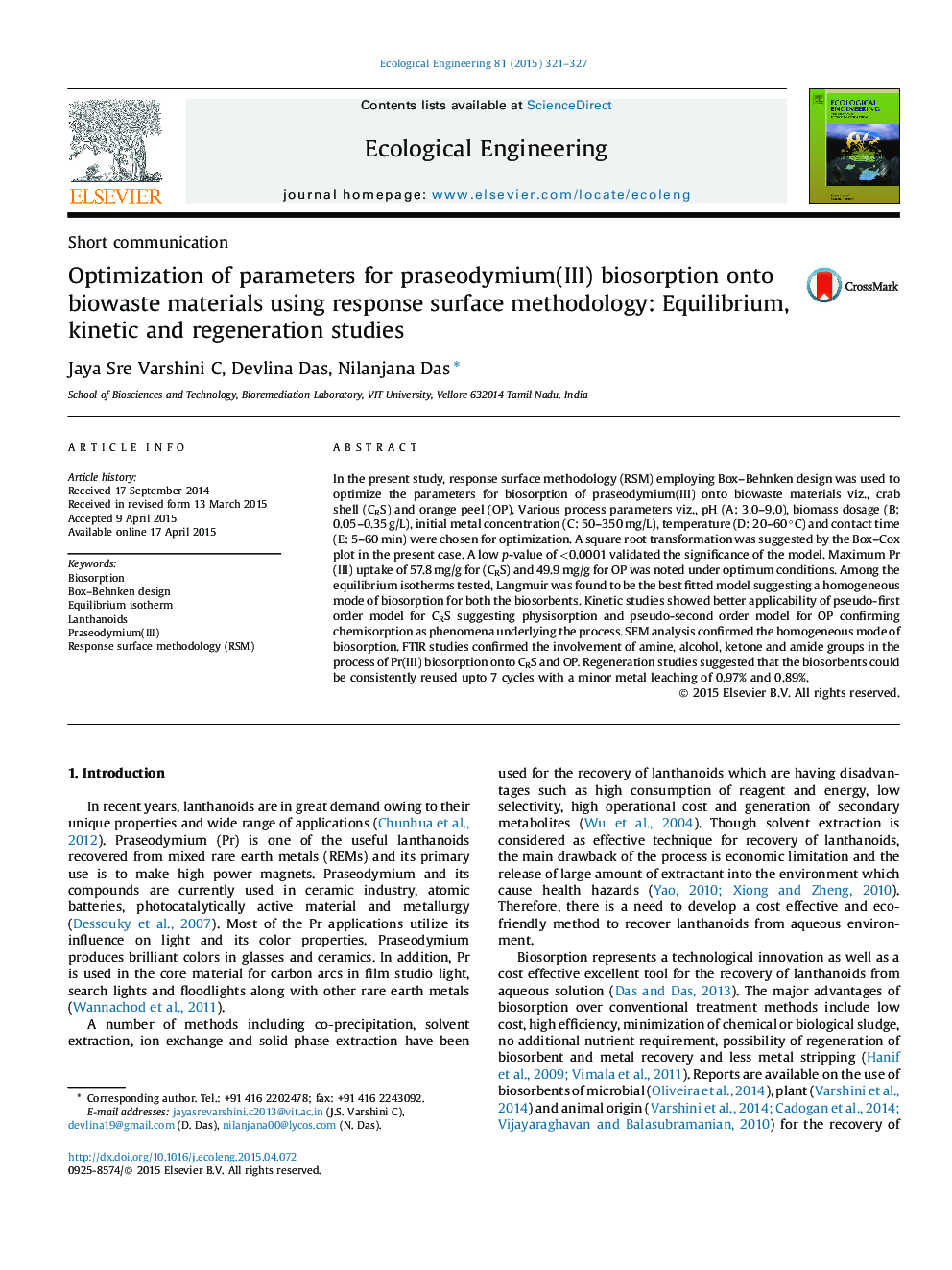| کد مقاله | کد نشریه | سال انتشار | مقاله انگلیسی | نسخه تمام متن |
|---|---|---|---|---|
| 4389088 | 1618018 | 2015 | 7 صفحه PDF | دانلود رایگان |

• Biowaste materials have been used for Pr(III) biosorption
• Operating parameters and their interactions on Pr(III) biosorption is tested.
• The suitability of Box–Behnken model as an efficient method has been assessed.
• Various equilibrium and kinetic models were tested.
• Reusability of the biosorbents was tested.
In the present study, response surface methodology (RSM) employing Box–Behnken design was used to optimize the parameters for biosorption of praseodymium(III) onto biowaste materials viz., crab shell (CRS) and orange peel (OP). Various process parameters viz., pH (A: 3.0–9.0), biomass dosage (B: 0.05–0.35 g/L), initial metal concentration (C: 50–350 mg/L), temperature (D: 20–60 °C) and contact time (E: 5–60 min) were chosen for optimization. A square root transformation was suggested by the Box–Cox plot in the present case. A low p-value of <0.0001 validated the significance of the model. Maximum Pr(III) uptake of 57.8 mg/g for (CRS) and 49.9 mg/g for OP was noted under optimum conditions. Among the equilibrium isotherms tested, Langmuir was found to be the best fitted model suggesting a homogeneous mode of biosorption for both the biosorbents. Kinetic studies showed better applicability of pseudo-first order model for CRS suggesting physisorption and pseudo-second order model for OP confirming chemisorption as phenomena underlying the process. SEM analysis confirmed the homogeneous mode of biosorption. FTIR studies confirmed the involvement of amine, alcohol, ketone and amide groups in the process of Pr(III) biosorption onto CRS and OP. Regeneration studies suggested that the biosorbents could be consistently reused upto 7 cycles with a minor metal leaching of 0.97% and 0.89%.
Journal: Ecological Engineering - Volume 81, August 2015, Pages 321–327